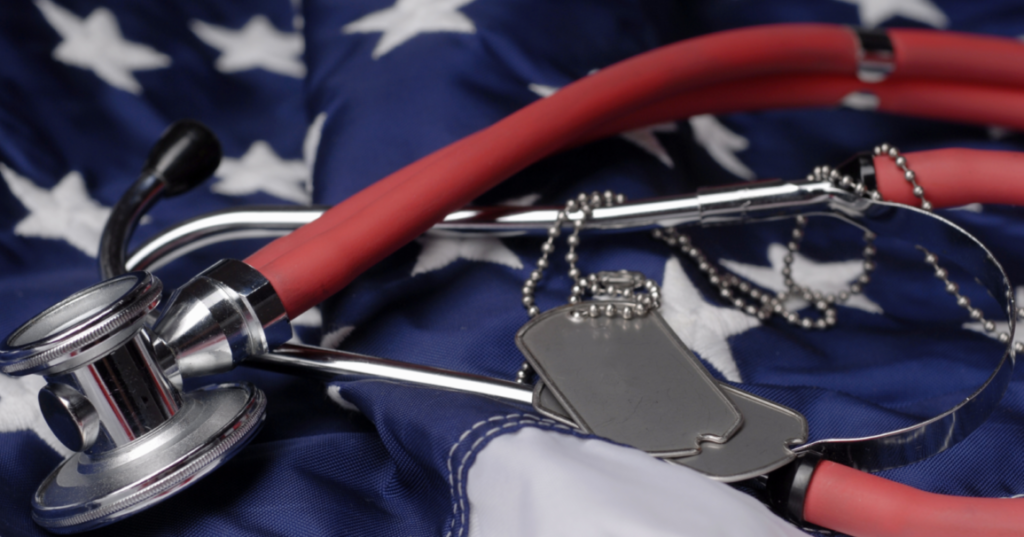
This month marks the third anniversary of the VA MISSION Act being signed into law and two years since its implementation began.
The VA MISSION Act has been instrumental in ensuring veterans receive quality, timely medical care and in creating a more dynamic Department of Veterans Affairs.
Before the VA MISSION Act, too many veterans were stuck in an overly bureaucratic health care system that was focused primarily on the needs of the VA rather than the needs of the veterans it served.
Few veterans were able to access care outside of the VA. They were stuck waiting weeks or months for appointments, even after measures to ease restrictions.
But exciting progress has been made, paving the way for a more veteran-centric VA health care system. Here’s a look back at what the VA was like before MISSION, what it’s like now, and what still needs to change.
Then: The Veterans Choice Program limited access to non-VA care
The Veterans Choice Program was hastily created in the wake of the Phoenix VA wait list scandal in 2014. The program managed care for a small number of veterans who were able to seek care from outside the VA.
While the VCP was a good first step, it was a placeholder for more comprehensive reforms and had several problems, including strict limits on who could seek non-VA care.
Now: The Community Care Program expanded access to non-VA care
The VA MISSION Act replaced the Veterans Choice Program with an improved version, the Veterans Community Care Program, which dramatically expanded the number of veterans who could seek care from non-VA providers.
Today the Community Care Program includes a network of 1.2 community providers that the VA can refer veterans to for health care services. It’s a vast improvement from the VCP, though it still requires congressional oversight to ensure the VA is properly implementing and utilizing community care options.
Then: Criteria for accessing non-VA was arbitrary and limiting
The Veterans Choice Program was created quickly, and its standards for accessing care were mostly arbitrary. Its criteria dictated the only veterans who could seek care in their communities were those who lived farther than 40 miles from a VA facility or had to wait longer than 30 days for an appointment.
The 40-mile rule was particularly troublesome as veterans might have lived within 40 miles of a VA facility, but not a VA facility that provided the right kind of care. If a vet lived 39 miles from a VA primary care facility but needed to see a specialist that was 150 miles away, that vet would still have to drive the 150 miles to use VA benefits.
Now: Updated access standards are broader and provide more veterans with options
The VA MISSION Act expanded access standards. Veterans can now be referred to community care under any of the following circumstances:
- The drive to a primary or mental health care appointment at the VA is longer than 30 minutes.
- The drive to a specialty health care appointment at the VA is longer than 60 minutes.
- The wait time for a primary or mental health care appointment at the VA is longer than 20 days.
- The wait time for a specialty health care appointment at the VA is longer than 28 days.
- The VA doesn’t provide the service the veteran needs.
- Community care is in the best medical interest of the veteran.
Expanded access standards mean more veterans can get care when and where they need it.
But there are still bumps in the implementation process. The VA has not updated its wait-time transparency data to reflect these criteria changes, making it harder for veterans to access actual appointment wait times.
Then: No community urgent care access
Under the VCP, urgent care from a community provider was not an option. If veterans needed urgent care services, they would have to go to a VA emergency room or pay an urgent care bill out of pocket.
Now: Community Care Program includes urgent care services
The VA MISSION Act includes urgent care services in the Community Care Program. This new benefit allows veterans to visit a local urgent care facility without needing to get a referral or permission from the VA first. Already veterans have made over half a million visits to community urgent care facilities.
Then: No good method for assessing VA’s facility needs
The VA leases, owns, and operates thousands of facilities around the country, many of which are more than 50 years old. While VA demographics and methods for delivering care were changing, VA facilities were aging, with no good mechanism for VA to assess needs.
Now: AIR Commission process establishes to review facilities and assets
The VA MISSION Act established a process for creating the Asset and Infrastructure Review Commission, a panel whose members will review all the facilities currently under VA control to get a handle on what the VA owns and leases, the ages of all those buildings, the funding needed to keep those buildings operating, and the demographic and utilization numbers for facilities. They will use this information to make recommendations to Congress and the VA about how the VA can modernize and improve care.
Unfortunately, the process is behind schedule and the administration has yet to select nominees for the commission. The statutory deadline for nominating commissioners was May 31.
We have seen progress made at the VA in the last three years, but the mission is not yet complete.
Congress and the VA still have a long journey ahead to ensure community care is accessible, the AIR Commission is established and set up for success, and veterans are put at the center of care.
CVA will continue to call for proper implementation of the VA MISSION Act and fight for veterans to get the care they deserve.
Help us make sure Congress and the VA #CompletetheMISSION.